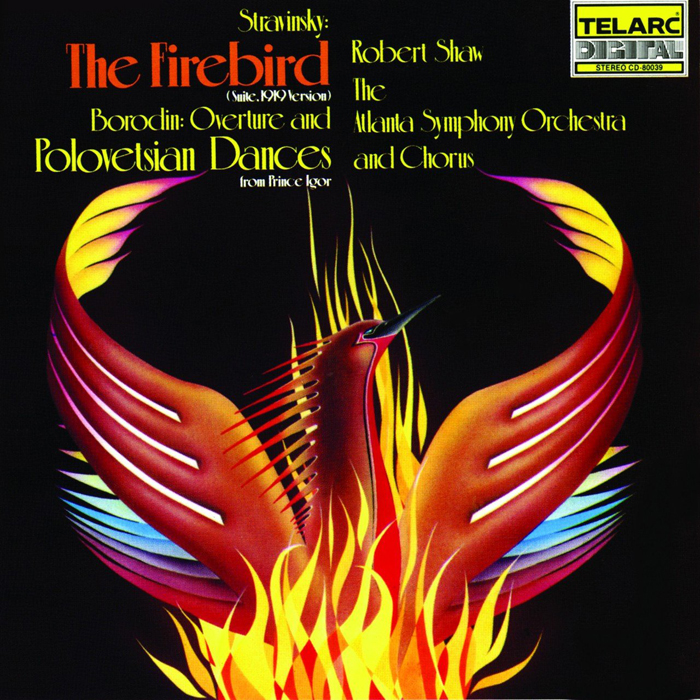The concept of the Swiss Digital FUSE BOX is fairly simple, the weakest link in the power chain is the fuse, intentionally so since its job is to protect the system by failing first. It is ironic that we spend hundreds if not thousands of dollars on fancy high-current power cables (I have known people to go so far as rewiring their house with gold power panels and high-end cable) yet all of that power has to pass through a tiny wire about the thickness of a hair. To fix this issue, the FUSE BOX takes over the job of the fuse, replacing said fuse with a copper or brass solid link called a “SLUGGO” (basically the same size as the original fuse allowing for a significant increase in current flow). Technically the FUSE BOX is not a lot different than a High-End surge protector, it electronically monitors changes in current flow, disconnecting the device should there be a spike, which it can do much faster than the fuse.
Here is Swiss Digital’s explanation; “To understand the Swiss Digital FUSE BOX, you need to first understand what the lowly fuses in your audio system does, and does not, do for you.
A fuse is a very simple and elegant safety device. AC Mains current flows through it on its way from your home’s wall outlet to the power supply of your audio product. By design, the current flowing through it causes the fuse filament to get warm because it is, in fact, a small value resistor. It uses Ohm’s Law and the concept of resistance heating (just like your toaster) to protect you. As the current through it increases, the heating of the element increases, until the conducted current exceeds its current rating, when, ultimately, it burns through and opens the circuit. If you examine a typical fuse you will see that lower rated fuses have smaller internal elements than ones of a higher current rating. One can infer from that observation that smaller value fuses have higher resistance than larger, and that is, in fact, the case, as easily shown by a precision Ohm meter. But that’s not the whole story, because you are measuring the fuse under “cold” conditions – with no current flowing through it. As current flows and the element heats, its resistance increases, up to the point of failure.
Now, let’s examine how your audio product reacts to a fuse’s natural characteristics. When you initially power on your product the current draws are high as the capacitors charge up and the active elements begin to conduct. This period is called the “inrush” and the fuse is sized to allow this amount of current to pass; the element will heat up very briefly, but soon return to a steady state or normal operations phase which is typically a much lower current value. In some cases, an equipment manufacturer might specify a “slow blow” fuse, if it knows the inrush current requirement of the product could exceed the brief capacity of a normal “fast blow” type of fuse. Regardless, the principle is the same.
Where the fuse becomes important of course, is from a safety perspective. If there is some fault in the product that causes the current draw to exceed the fuse rating. Under that condition, the fuse will continue to heat so long as the excess current draw is maintained, forcing it ultimately to blow, as we described above.
While good as a safety device, the characteristics of a fuse are not optimum for audio performance. The Swiss Digital FUSE BOX is designed to eliminate all of the drawbacks of a common fuse.
First of all, the existing fuse in your piece of equipment is replaced by a solid copper rod (named “SLUGGO”) which has negligible resistance and can pass currents you are unlikely to see in any audio product – certainly more than a hundred Amps – before heating (please be sure to read the safety implications of using SLUGGO in your own product.)
Second, the FUSE BOX itself is placed in the power cord between your product and the wall. It measures current flow to your product MAGNETICALLY without introducing any additional source resistance and then feeds this data to the internal microcomputer which determines if that current is “allowed” per the program it is running that emulates your specific fuse value as well as slow blow or fast blow type. If the microcomputer determines the current profile exceeds specifications it will immediately open the ultra-low resistance contacts of the internal high-power relay, disconnecting the load, and eliminate any further current draw.
“Resetting” FUSE BOX to its rated value requires that it be disconnected from the wall for a minimum of 15 seconds. You must also examine your equipment for problems before trying again. FUSE BOX blowing again indicates your product has a problem, just as it would using a traditional fuse.”
Note: as a further precaution for tube amp owners, many tube amps use tube rectifiers which don’t like interruptions in power, I would recommend waiting several minutes before resetting the FUSE BOX to allow the tubes to cool down.
Living with the Swiss Digital FUSE BOX:
I should point out at the beginning here that I do not have the facilities to test the safety aspects of the FUSE BOX and am simply forced to accept Swiss Digital’s claims as to its circuit breaker abilities as I am not crazy enough to potentially damage my amplifier to verify this and will leave such tests to techs geared for such. This means I will be testing for the positive effects to sound quality only. To do this I will be using my LSA Warp One Amplifier, XSA-Labs Vanguard Speakers, FiiO R7 Music Server, Black Dragon Cables, and Core Power Technologies A/V Equi=Core 1000. I will perform these tests in a series of stages, starting with comparing the system with and without the Swiss Digital FUSE BOX to determine if the FUSE BOX itself has any impact on the sound, then I will install the SLUGGO to discover what improvement is made.
Connecting the Swiss Digital FUSE BOX was simply a matter of connecting my power cord to the FUSE BOX and using the supplied “Piggy Tail” cable to connect the FUSE BOX to my amplifier. When the time came, replacing the fuse with the SLUGGO was a little more labor intensive (the fuse box needs to be pried out with a screwdriver, this will vary from amplifier to amplifier depending on the accessibility of the fuse) but could hardly be called a chore.
This is one of those rare instances where A/B tests are called for, normally I am not a fan of A/B tests as they don’t tell what sounds good, but what sounds different, and the listener is listening to the differences rather than the music. Back in the ‘70s, I performed some A/B tests with a large sampling of people, and invariably they chose the amplifier that was universally agreed to sound worse normally. The reason? The lesser amplifier produced distortions that the other amplifiers didn’t giving the illusion that you were hearing more detail.

So to make these tests I needed to have a specific song list, stressing different aspects of the amplifier. My first choice was Peter Gabriel’s new track “So Much (Dark-Side Mix)” (24-bit/96kHz Qobuz). This track gave a rich soundstage and the harmonic overtones of the piano. Comparing with and without the FUSE BOX (fuse in place) there was no discernible difference which is what we are looking for.

Next up was a classical piece that brings out resolution and noise floor as well as dynamic range. For this I reverted to my standby “The Firebird Suite” as performed by Robert Shaw and the Atlanta Symphony Orchestra (“Stravinsky: The Firebird; Borodin: Music from Prince Igor” – 16-bit/44.1kHz), again the FUSE BOX failed to harm the presentation.

And lastly, we need something with extreme sub-bass and percussion so I once again went to my standard test tracks for “Can-utility And The Coastliners” by Genesis (“Foxtrot” – DSD). Once more there was no loss through the FUSE BOX so it became time to install the SLUGGO, I chose the copper because copper has the better electrical properties, and went through my list in reverse order as this would mean not changing the volume for the most demanding track power wise. The difference was noticeable immediately, with greater clarity and a more solid image, and even a slight increase in gain. The dynamic range was substantially improved as the noise floor remained low.
With the Stravinsky piece as before the image had greater solidity and stronger placement, and even the transients appeared to be enhanced.
Going back to Qobuz I actually lowered the volume from my initial test as the presentation had become larger than life. At this point, I decided to give the brass SLUGGO a try. Weirdly enough the sound was a little mellower and the height of the soundstage appeared to be slightly lower, I switched back to the copper to verify that my observations held. I assume this is due to the higher resistance of the brass, but there could also be a capacitive effect between the brass and the contacts.
Conclusions on the Swiss Digital FUSE BOX:
I’ll admit to a bit of skepticism when I was approached with this product, but the Swiss Digital FUSE BOX delivered on its promises and then some. I’ve always said that in an amplifier, power supply is everything, this was clear going all the way back to early Hi-Fi when we would build huge outboard power supplies as performance mods. With modern audio products trying to run more efficiently it only makes sense that the limiting factor is the amount of power going into the power supply, and as noted above the weakest link in the power chain is the fuse. While your amplifier has the highest current demands, I suspect any product that has an amplifier circuit such as DACs, Streamers, Tuners, Phono Stages, and Preamps will see similar improvements.
Don’t confuse the FUSE BOX with other audio products designed to improve your system by affecting the audio signal path which can have positive or negative effects, the FUSE BOX simply allows your amplifier to do its best, while this will lower the noise floor by the simple dynamic of increasing the dynamic range and speed of the amplifier it should have no effect on the tonal balance that is not power related (linear frequency response may be improved where power diminishes due to impedance changes).
The Swiss Digital FUSE BOX is an easy recommend for anyone who is happy with their system sound but wouldn’t mind a bit of improvement without making major changes or spending thousands of dollars, whether we are talking about two-channel loudspeaker, headphone personal audio, or home theater, two thumbs up as they say.
Price: $395 ($494 with “Piggy Tail” power cord)
Manufacturer’s Website: https://www.verafiaudiollc.com/products/best-audio-products/swiss-digital-fuse-box-52299809















Want to join discussion?
Feel free to contribute!